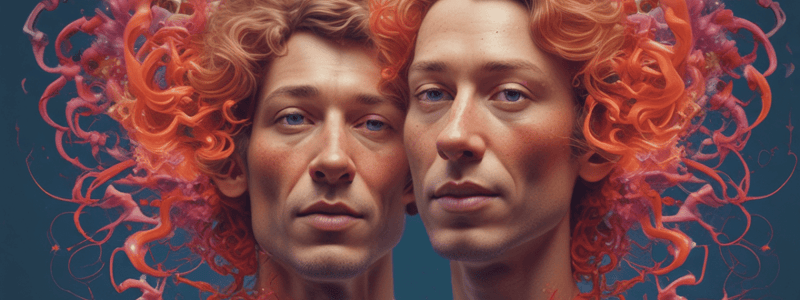Podcast
Questions and Answers
What makes psychological causation qualitatively different from physical causation?
What makes psychological causation qualitatively different from physical causation?
- Physical events underlying psychological causation
- Creation of intentions through will (correct)
- Understanding language in terms of size and shape
- Predictability of intentions
Why are intentions not predictable?
Why are intentions not predictable?
- They are governed by conscious laws
- They are easily understood through physical events
- They are determined by physical causation
- They are unknowable and unconsciously driven (correct)
Which principle states that opposite experiences intensify one another?
Which principle states that opposite experiences intensify one another?
- Principle of Contrast (correct)
- Principle of Heterogony of ends
- Principle of Rationalism
- Principle of Volitional Acts
What does the Principle of the Heterogony of ends suggest about goal-directed activities?
What does the Principle of the Heterogony of ends suggest about goal-directed activities?
How did William view volitional acts according to the text?
How did William view volitional acts according to the text?
What does William believe governs volition according to the text?
What does William believe governs volition according to the text?
What was the primary purpose of Donders' experiments using reaction time?
What was the primary purpose of Donders' experiments using reaction time?
What was the main issue that led Donders to eventually abandon his reaction time studies?
What was the main issue that led Donders to eventually abandon his reaction time studies?
Which of the following methods did Donders use in his reaction time experiments?
Which of the following methods did Donders use in his reaction time experiments?
What was Wundt's belief about the relationship between physical and psychological causation?
What was Wundt's belief about the relationship between physical and psychological causation?
What did Wundt aim to achieve with his use of Donders' reaction time methods?
What did Wundt aim to achieve with his use of Donders' reaction time methods?
What percentage of the early work done in Wundt's lab was related to repeating or expanding Donders' research on reaction time?
What percentage of the early work done in Wundt's lab was related to repeating or expanding Donders' research on reaction time?




